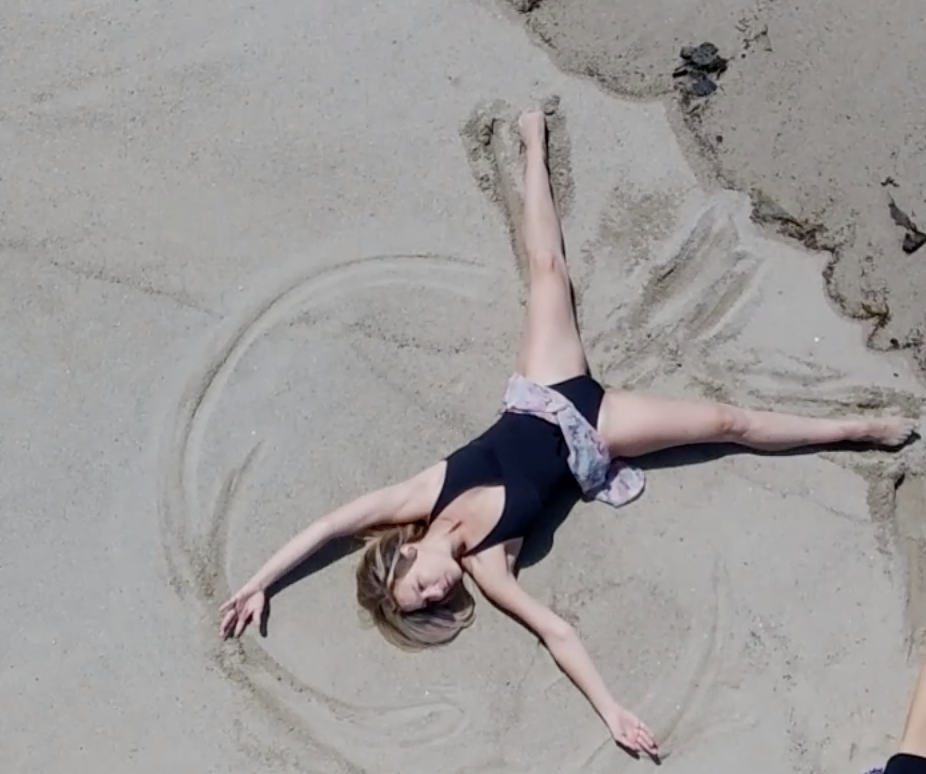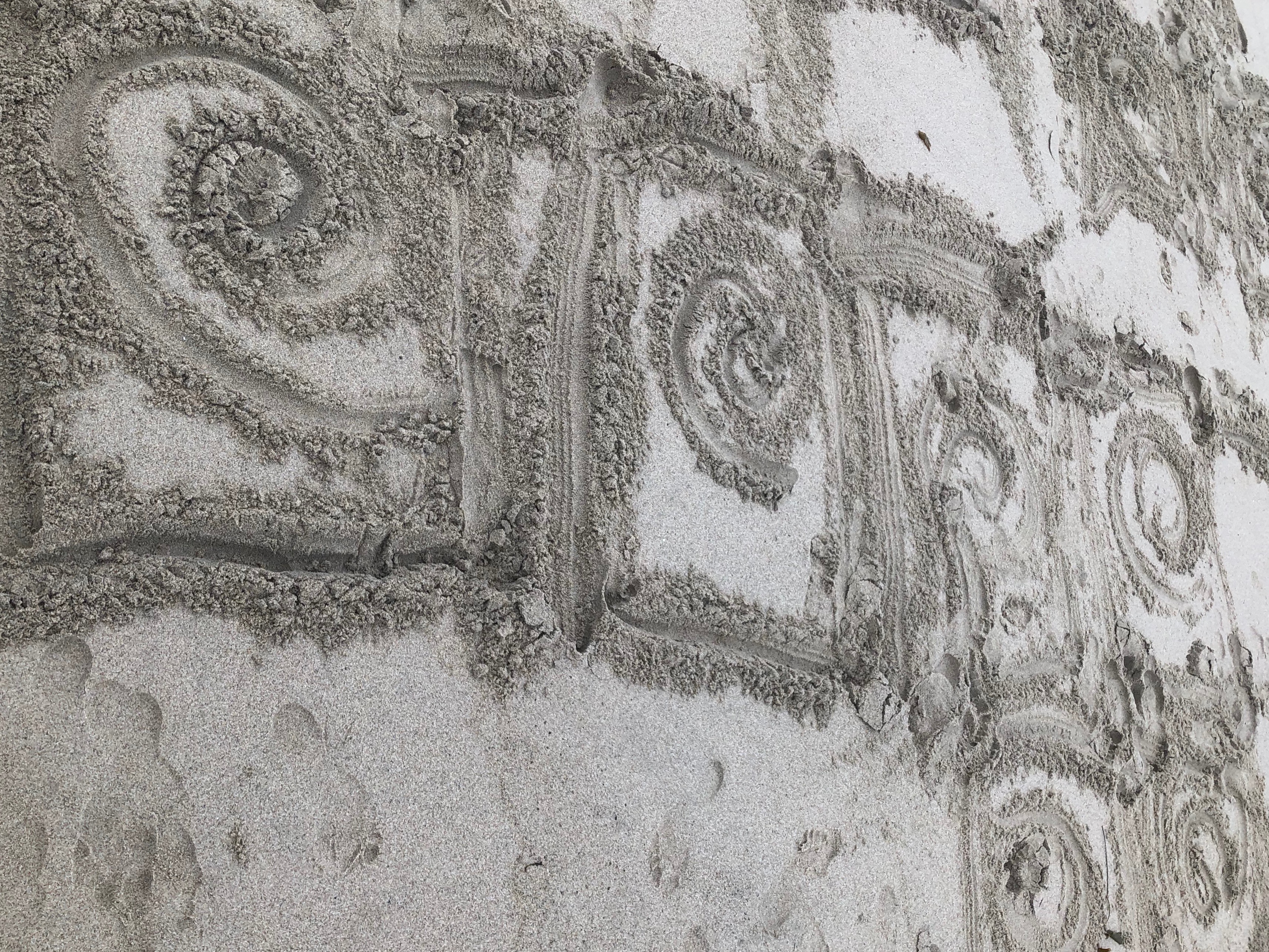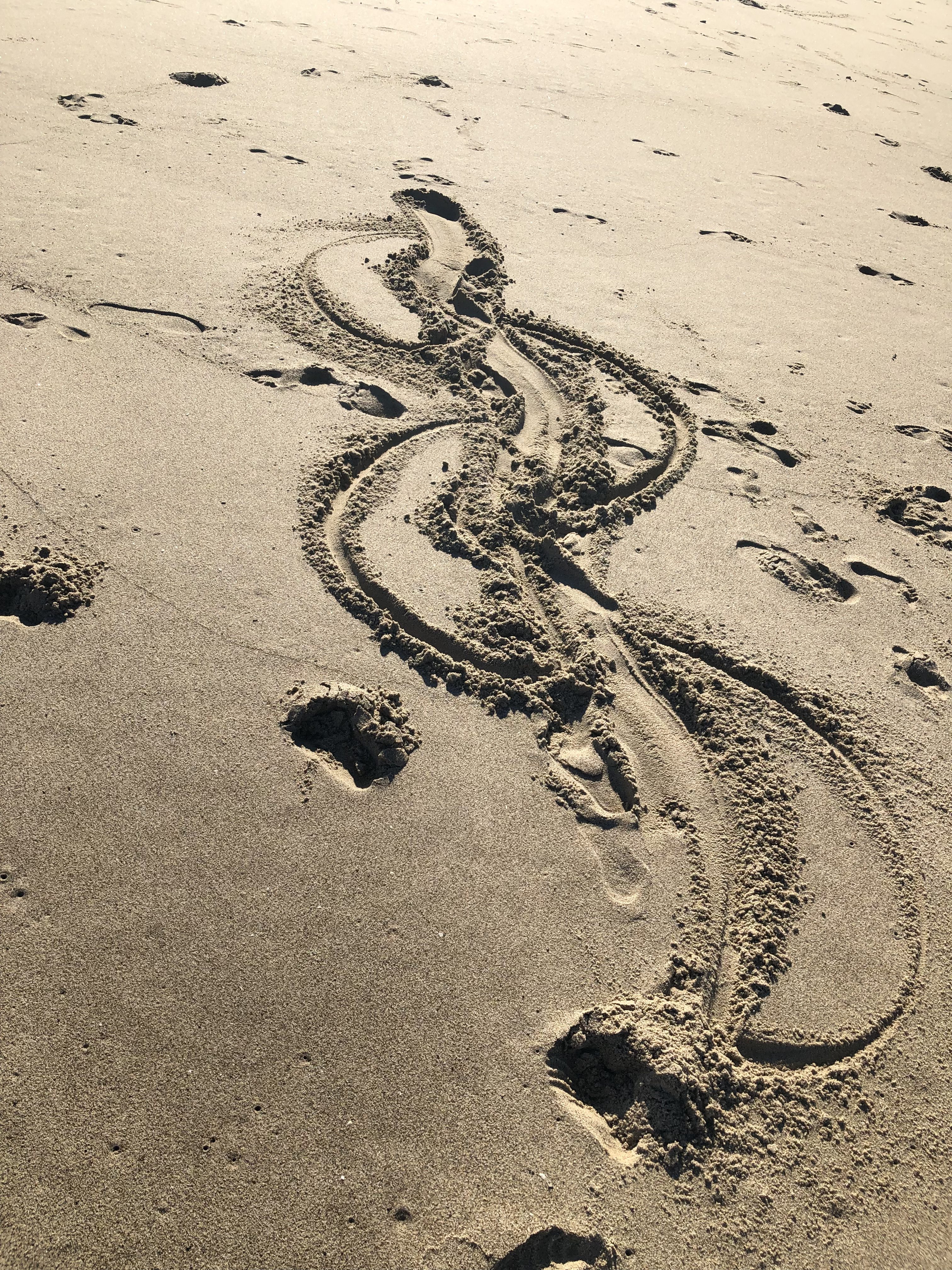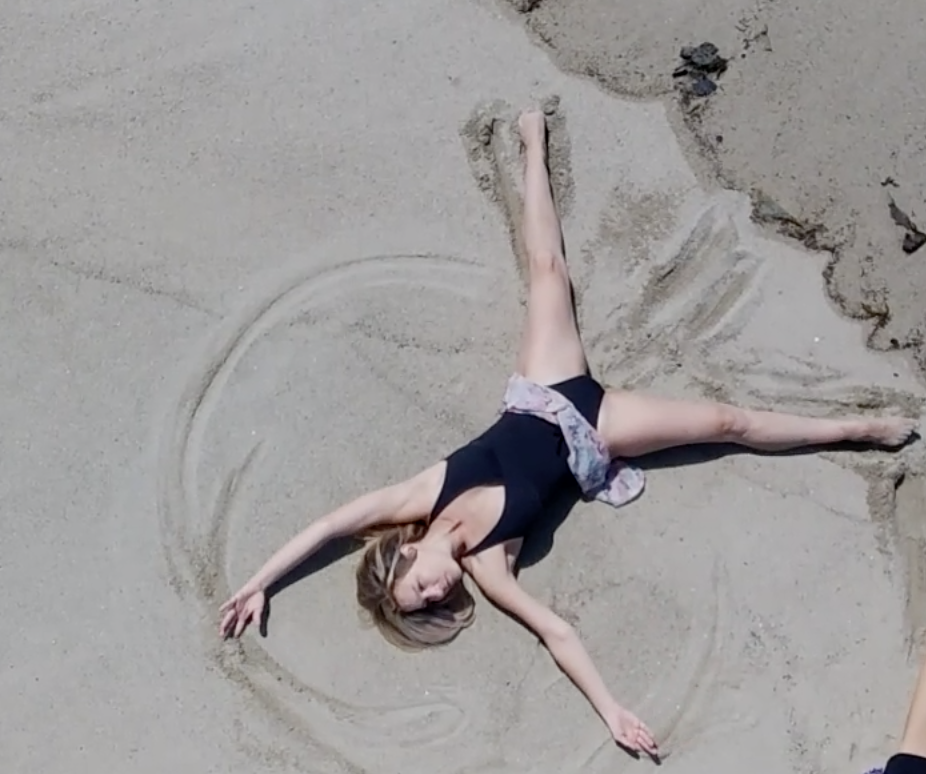
It is not the novelty of the location but the behavioral quality of the sand that first drew me to the shore for movement experiments. Sand keeps a record of movement, however briefly. Visually and conceptually, this offers new possibilities for choreography, dance training, and performance.
Dancing on a textured surface facilitates the actual manipulation of something tactile.
Pushing and pulling physical matter feels unexpectedly satisfying. Perhaps because drawing in the sand fulfills years of subconsciously frustrating cues from educators like, “draw a semi circle to do a rond de jambe." Imagery cues of tracing or drawing make an attempt at being literal but fail at being literally measurable in a studio setting.
With the Sand Dance Project, the phrases that I choreograph are created without regard to the lines in the sand. The lines are an observational effect. The lines often surprise me by being beautiful in their large scale and geometric accuracy - their own piece of art. On one occasion however, we did set out to leave a specific set of symbols (see the Kandinsky study below).
With sand dancing, every movement across the surface is recorded, drawn, traced and evidenced by the lines in the sand. Indentations in the surface of the sand are clues revealing the history of the body’s movement across it.
People have been dancing in sand for ages. The seashore is alive daily with surfers, yogis, sunbathers, volleyball players, joggers, and everyone in between. Runners practice in the sand to become faster on solid ground. People work out on the beach to benefit from the scenery and the breeze.
Beautiful scenery was not the motivation for the Sand Dance Project. However, meeting at the beach became a welcome change of ritual from meeting in a box with hard floors.


Just for clarity we did execute rond de jamb in the sand and yes, the outside leg does trace a semi-circle but, interestingly, brushing through fifth position leaves a wavy line instead of a straight one.
Below are examples of lines left as a result of movements created without regard for the resulting symbols.
If you're a dancer, tell us: What cues have helped you to grasp a movement concept? What shapes would you like to dance in the sand, or what movement are you curious to see represented in 2D? If you're not a dancer, tell us: How crazy does this sound on a scale of 1-10:)?


